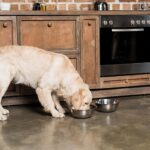The Temperature Danger Zone For Food is a critical concept for anyone handling food, and understanding this range is paramount for ensuring food safety and preventing foodborne illnesses. FOODS.EDU.VN offers comprehensive resources and guidance to help you master food safety practices, ensuring delicious and safe meals every time. Learn about temperature abuse, safe food handling, and foodborne illnesses.
1. Defining the Temperature Danger Zone
The temperature danger zone is the temperature range in which bacteria multiply rapidly in food, significantly increasing the risk of foodborne illnesses. According to food safety guidelines, this zone lies between 41°F and 135°F (5°C and 57°C). Within this range, bacteria can double in number in as little as 20 minutes, leading to potentially dangerous levels of contamination. It’s imperative for foodservice operators, home cooks, and anyone involved in food preparation to understand and adhere to these temperature guidelines to prevent foodborne illnesses. As highlighted by ServSafe recommendations, maintaining food outside of this zone is crucial for inhibiting bacterial growth and ensuring food safety.
2. The Critical Importance of Avoiding the Danger Zone
Allowing food to linger within the temperature danger zone creates a breeding ground for harmful bacteria, leading to spoilage and potential health risks. Bacteria like Salmonella, E. coli, and Staphylococcus aureus thrive in this temperature range, multiplying rapidly and producing toxins that can cause foodborne illnesses. What makes this particularly concerning is that these bacteria can proliferate without any visible signs of spoilage, meaning food can appear and smell normal while still harboring dangerous levels of contamination.
According to the Centers for Disease Control and Prevention (CDC), foodborne illnesses affect millions of people each year, leading to hospitalizations and, in some cases, even death. Preventing food from entering the temperature danger zone is not just a matter of food quality; it’s a critical aspect of public health. Therefore, strict adherence to proper chilling, heating, and storage techniques is essential for all food handlers. At FOODS.EDU.VN, we emphasize the importance of these practices through detailed guides and resources, ensuring that our users are well-equipped to maintain food safety standards.
3. Time-Temperature Abuse: A Major Culprit
Time-temperature abuse refers to allowing food to remain within the temperature danger zone (41°F to 135°F) for an extended period, facilitating bacterial growth and increasing the risk of foodborne illnesses. This typically occurs in three ways:
- Improper Holding or Storage: Food is not held or stored at safe temperatures, allowing it to enter the danger zone.
- Insufficient Cooking or Reheating: Food is not cooked or reheated to temperatures high enough to kill pathogens.
- Inadequate Cooling: Hot food is not cooled down properly before being placed in cold storage.
Time-temperature abuse, alongside cross-contamination, stands as a primary cause of foodborne illnesses and a common violation of health codes. Understanding and preventing these scenarios is crucial for maintaining food safety.
4. Understanding TCS Foods: High-Risk Candidates
TCS foods, which stands for Time/Temperature Control for Safety, are those that require careful temperature and time controls to prevent the growth of pathogens. These foods provide an ideal environment for bacteria to thrive, making them high-risk for foodborne illnesses if not handled properly. It is vital to maintain strict temperature control over TCS foods to prevent them from entering the danger zone. The list of TCS foods includes:
- Milk and Dairy Products
- Meat and Poultry
- Fish, Shellfish, and Crustaceans
- Shell Eggs
- Baked Potatoes
- Cooked Rice, Beans, and Vegetables
- Tofu, Soy Protein, or Other Plant-Based Meat Alternatives
- Sprouts and Sprout Seeds
- Cut Tomatoes, Melons, and Leafy Greens
- Untreated Garlic and Oil Mixtures
Regular monitoring and proper handling of these foods are essential to ensure food safety. FOODS.EDU.VN provides detailed guidelines on handling TCS foods, ensuring you have the knowledge and resources to maintain safety in your kitchen.
5. Time Limits: How Long Is Too Long in the Danger Zone?
The length of time that food can safely remain within the temperature danger zone is a critical factor in preventing foodborne illnesses. According to ServSafe guidelines, ready-to-eat foods should not be left in the temperature danger zone for more than 4 hours. After this period, the food is considered spoiled and must be discarded to prevent potential health risks.
However, it’s important to note that even within the 4-hour limit, bacteria can multiply rapidly, especially between 70°F and 125°F. Therefore, frequent temperature checks are essential. Checking temperatures every 2 hours provides a greater window for corrective actions, such as reheating or chilling, to bring food back to safe temperatures. Proactive monitoring and adherence to time limits are key to ensuring food safety and preventing the spread of harmful bacteria.
6. Proactive Strategies for Staying Out of the Danger Zone
Kitchen thermometers are your first line of defense in keeping foods out of the temperature danger zone. Consistent temperature monitoring during preparation, cooking, and holding is essential to prevent time-temperature abuse. Accurate temperature readings allow you to take corrective actions promptly, ensuring food safety. Here are some tips to help you:
- Use the Right Thermometer: Select the appropriate thermometer for the task, whether it’s a probe thermometer for internal temperatures or an infrared thermometer for surface readings.
- Don’t Rely on Equipment Alone: Always verify temperatures with a calibrated thermometer, rather than relying solely on the equipment’s display.
- Monitor Refrigerators and Freezers: Place a thermometer inside your refrigerator or freezer to ensure they are maintaining safe temperatures.
- Maintain Records: Keep a log of all temperature checks, including the temperature, time, and the operator’s name.
- Calibrate Regularly: Ensure your thermometers are accurate by calibrating them frequently.
These practices, integrated into your HACCP training, will empower your team to maintain strict temperature control and safeguard against foodborne illnesses.
7. Maintaining Food Safety Through Proper Holding Temperatures
Once food has been cooked to the proper internal temperature or chilled to 40°F (4°C) or below, maintaining these safe temperatures is crucial, especially when holding food for extended periods. This is particularly important for salad bars, buffet lines, and catering events.
When transporting food, using insulated food pan carriers or catering bags is highly recommended. These containers help maintain consistent temperatures, ensuring that hot foods stay hot and cold foods stay cold, thus preventing them from entering the temperature danger zone. Proper insulation and temperature maintenance are essential for safe food service.
8. Mastering Cold Holding Temperatures for Food Safety
Maintaining cold food at the correct temperature is crucial for preventing bacterial growth. The ideal cold food holding temperature for TCS foods is 40 degrees Fahrenheit (4 degrees Celsius) or below. This ensures that harmful bacteria are kept at bay, reducing the risk of foodborne illnesses. Here are some essential tips to help you properly hold cold foods:
- Ensure your cold-holding equipment, such as cold food tables and cold crocks, maintains a temperature of 40 degrees Fahrenheit or below.
- If cold food is held without refrigeration, it remains safe for up to 6 hours, starting from when it was removed from refrigeration at 40 degrees Fahrenheit or below.
- Check the temperature of cold foods every 2 hours. If the temperature reaches 70 degrees Fahrenheit or higher, the food should be discarded immediately.
8.1. Achieving Optimal Salad Bar and Refrigerator Temperatures
Salad bars and refrigerators should consistently maintain temperatures at or below 40 degrees Fahrenheit (4 degrees Celsius) to inhibit the growth of dangerous bacteria. This is especially important for vulnerable TCS foods such as cheeses, yogurts, meats, salad dressings, and egg products. Regular temperature monitoring and adherence to these guidelines are essential to ensure the safety of the food you serve.
9. Ensuring Hot Holding Temperatures for Food Safety
Maintaining hot food at the correct temperature is just as crucial as keeping cold food cold. The safe hot holding temperature for food is 135 degrees Fahrenheit (57 degrees Celsius) or higher. This temperature is high enough to prevent the growth of harmful bacteria that can cause foodborne illnesses. Here are some best practices to ensure your hot foods stay safe:
- Never use hot holding equipment to reheat food. Ensure foods are heated to safe temperatures before placing them in hot holding units. Hot holding equipment, like steam tables and holding cabinets, is designed to maintain temperature, not to bring food up to temperature.
- Keep food covered whenever possible to help maintain temperature and prevent contamination.
- Stir food frequently to distribute heat evenly and prevent cold spots.
- Use an appropriate thermometer to monitor food temperatures regularly.
- Discard any hot food that has been sitting below 135 degrees Fahrenheit (57 degrees Celsius) for more than 4 hours.
- Never mix freshly prepared food with food that has already been held for service, as this can lead to cross-contamination.
9.1. Frequent Temperature Checks: A Must for Hot and Cold Foods
Checking the temperature of both hot and cold holding food every four hours is highly recommended. However, checking every two hours provides a greater opportunity to take corrective action if food has entered the temperature danger zone. Staying vigilant about monitoring food temperatures can prevent the spread of dangerous bacteria and minimize food waste by allowing you to reheat or rechill affected foods before bacteria have a chance to proliferate.
10. Navigating the Danger Zone: Frequently Asked Questions
Understanding the temperature danger zone can raise many questions. Here are some of the most frequently asked questions to help clarify any confusion and ensure you are practicing safe food handling.
10.1. What is the best way to cool foods quickly?
Proper cooling of foods is essential to minimize the time they spend in the temperature danger zone. The goal is to cool food to 70 degrees Fahrenheit (21 degrees Celsius) within 2 hours and then further down to 41 degrees Fahrenheit (5 degrees Celsius) within an additional 4 hours. Avoid placing hot food directly into the refrigerator or freezer, as this can raise the ambient temperature and endanger other foods. Instead, try these methods:
- Use a commercial blast chiller to rapidly cool foods.
- Store foods in shallow containers to promote even temperature distribution.
- Use a cooling paddle to reduce the temperature of hot liquids like soups and sauces.
- Create an ice bath by placing containers of hot food in a basin filled with ice.
10.2. What are the safest methods for thawing food?
Improper thawing is a common cause of time-temperature abuse. Avoid leaving food out on the counter or running it under hot water. Instead, use these safe methods to defrost food:
- Move the frozen food to the refrigerator 10-24 hours before cooking.
- Place the frozen food under cold running water in a clean prep sink.
- Use the defrost setting on a microwave, ensuring the food is cooked immediately afterward.
- Cook the food from its frozen state, regularly checking internal temperatures.
10.3. What are the safe cooking temperatures for different foods?
Ensuring foods reach safe internal temperatures is crucial for killing harmful bacteria. Here is a temperature guide for some common ingredients:
| Food Type | Safe Internal Temperature |
|---|---|
| Poultry, Stuffing, Dishes with Cooked TCS Foods | 165 degrees Fahrenheit (74 degrees Celsius) |
| Ground Meat, Flavor-Injected Meats, Shell Eggs | 155 degrees Fahrenheit (68 degrees Celsius) |
| Seafood, Steaks and Chops, Game Meat, Roast Meats | 145 degrees Fahrenheit (63 degrees Celsius) |
| Fruits, Vegetables, Grains, Legumes | 135 degrees Fahrenheit (57 degrees Celsius) |
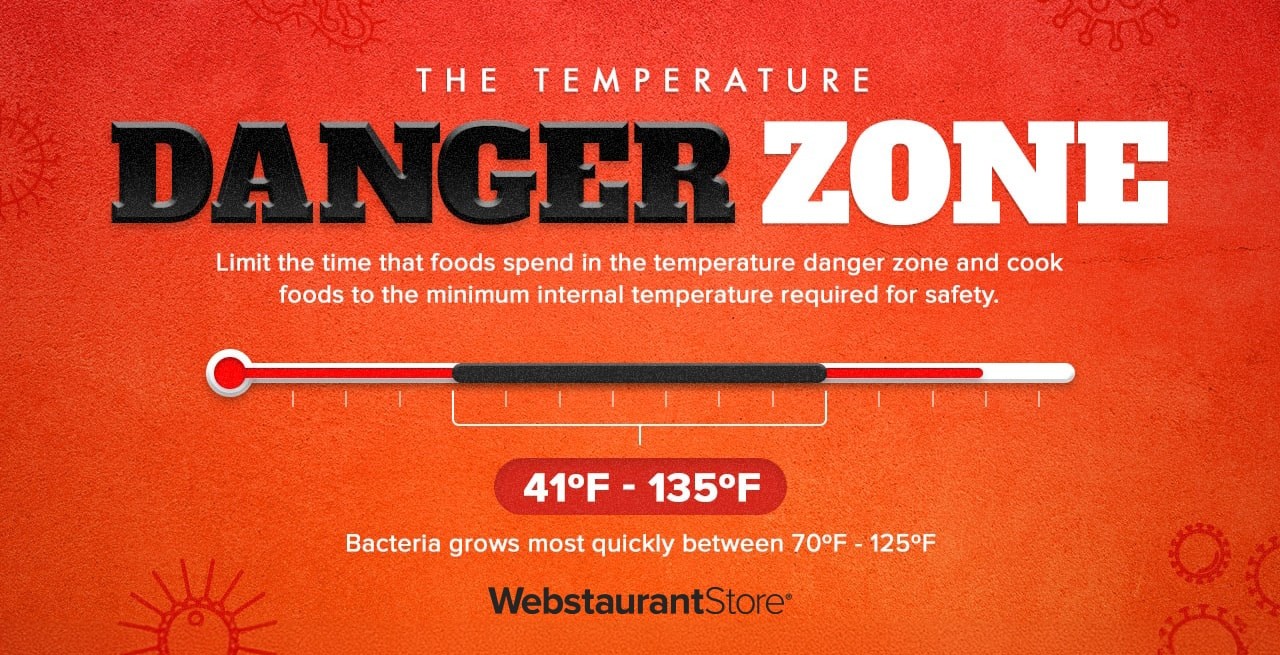
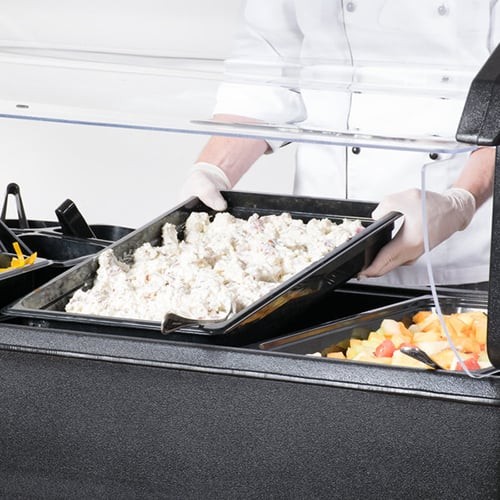
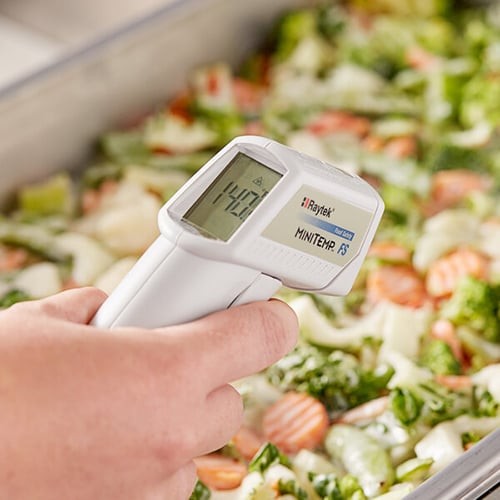
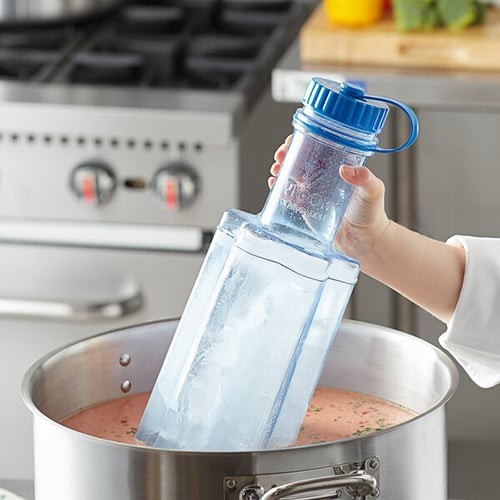
Maintaining these temperatures for at least 15 seconds ensures that the food is safe to serve.
Ensuring food safety is a top priority for any foodservice operator, home cook, or food enthusiast. By understanding the temperature danger zone and implementing these critical tips, you can protect yourself and others from foodborne illnesses. Proper food handling, storage, and preparation are essential for creating safe and enjoyable meals.
Are you eager to expand your culinary expertise and ensure top-notch food safety? Visit FOODS.EDU.VN today for a wealth of in-depth articles, expert advice, and practical tips. Unlock a world of culinary knowledge and elevate your skills to create delicious and safe dishes every time. Start your journey towards culinary mastery with foods.edu.vn!
Address: 1946 Campus Dr, Hyde Park, NY 12538, United States. Whatsapp: +1 845-452-9600.
